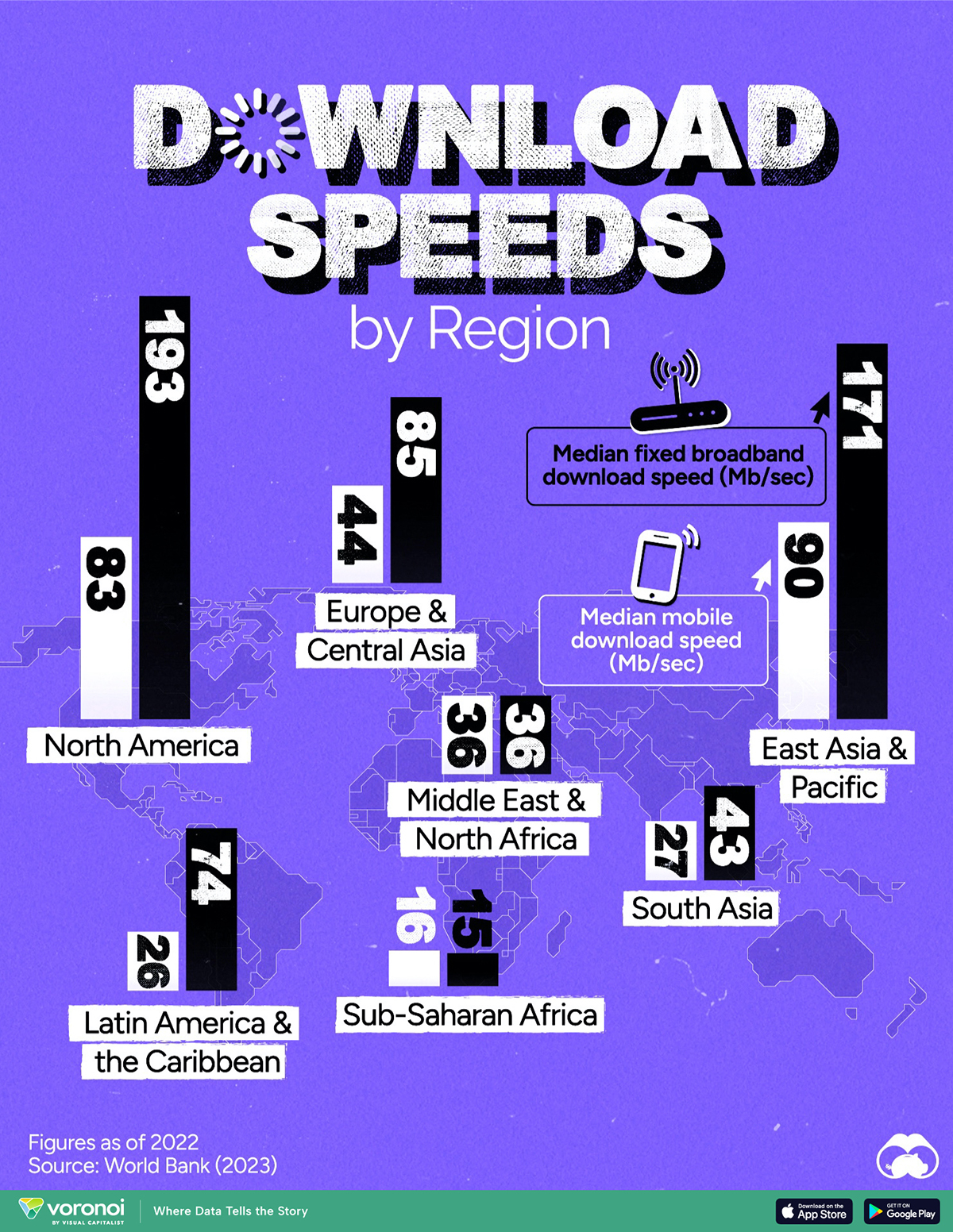![]()
See this visualization first on the Voronoi app.

Mapped: Internet Download Speeds by Region
This was originally posted on our Voronoi app. Download the app for free on iOS or Android and discover incredible data-driven charts from a variety of trusted sources.
In today’s fast-paced world, internet speed isn’t just a convenience—it’s the driving force behind how we work, play, and connect.
In this map, we illustrate median download speeds in each global region, based on data from the World Bank’s Digital Progress and Trends Report 2023.
North America and East Asia Have the Speediest Internet
According to the World Bank, download speeds in high-income countries increased significantly between 2019 and 2023, while speeds in lower-income countries stagnated.
As of 2022, North America and East Asia have the speediest internet.
| Region | Median mobile download speed (Mb/sec) | Median fixed broadband download speed (Mb/sec) |
|---|---|---|
| East Asia & Pacific | 90 | 171 |
| Europe & Central Asia | 44 | 85 |
| Latin America & the Caribbean | 26 | 74 |
| Middle East & North Africa | 36 | 36 |
| North America | 83 | 193 |
| South Asia | 27 | 43 |
| Sub-Saharan Africa | 16 | 15 |
This difference in broadband speeds can mainly be attributed to investment.
In 2020, nearly 90% of global telecommunication investment came from East Asia and the Pacific, Europe and Central Asia, and North America. These regions not only concentrate the highest-income population but also the top technology hubs.
Meanwhile, low- and middle-income regions such as Latin America and the Caribbean, South Asia, and Sub-Saharan Africa accounted for less than 10% of total investment.
Most of the investment is directed towards fiber optic and 5G mobile networks. According to the mobile industry association GSMA, mobile operators alone are projected to invest more than $600 billion between 2022 and 2025, with 85% of the total allocated for 5G.
In 2023, broadband speeds in high-income countries were 10x faster for fixed connections, and 5x faster for mobile connections compared to those in low-income countries.
Fixed broadband connections, which provide high-speed internet to residences or businesses, reached 38% of the population in high-income countries. In comparison, fixed broadband penetration was only 4% of the population in lower-middle-income countries and almost zero in low-income countries.
The post Mapped: Internet Download Speeds by Region appeared first on Visual Capitalist.